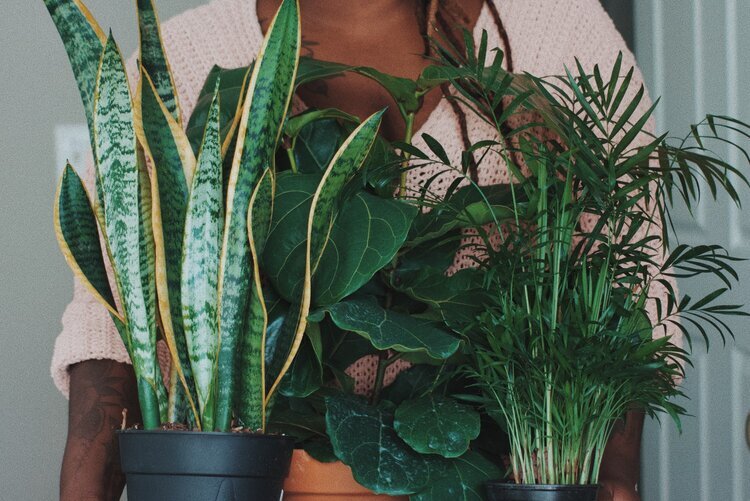Gardening Therapy: How Plants Improve Mental Health is an intriguing exploration into the emotional benefits of nurturing plants. Many people are unaware that engaging with greenery can significantly enhance mental well-being. Whether it’s the calming effect of tending to a garden or the satisfaction of watching a plant thrive, numerous studies suggest that gardening can alleviate stress, anxiety, and depression.

This practice, often regarded as a form of therapy, not only connects individuals with nature but also encourages mindfulness and creativity. Through activities like planting, watering, and harvesting, individuals can create a sanctuary that fosters peace and joy, ultimately contributing to improved mental health.
Welcome to the World of Coffee: A Journey Through Aroma, Flavor, and Culture
Have you ever taken a moment to savor a cup of coffee? That rich aroma wafting through the air, the warmth radiating from the cup in your hands, and the complex flavors dancing on your palate. Coffee is more than just a morning ritual; it’s a global phenomenon that connects people, cultures, and experiences. In this post, we’ll embark on an exciting journey through the world of coffee, exploring its history, the different types of beans, brewing methods, and the cultural significance it holds across the globe.
### A Brief History of Coffee
The story of coffee begins centuries ago in the ancient coffee forests of Ethiopia. According to legend, a goat herder named Kaldi discovered the coffee bean when he noticed that his goats became unusually energetic after eating the berries from a certain tree. Intrigued, Kaldi tried the berries himself and experienced a newfound vitality. This serendipitous discovery led to the introduction of coffee to the Arab world, where it quickly gained popularity.
By the 15th century, coffee was being cultivated in Yemen, and soon after, it spread to Persia, Egypt, and Turkey. Coffeehouses known as “qahveh khaneh” became cultural hubs where people gathered to drink coffee, discuss news, and enjoy music and poetry. These early coffeehouses were the birthplace of social interactions, intellectual debates, and artistic movements.
As the demand for coffee grew, so did its cultivation. The 17th century saw coffee making its way to Europe, where it was met with mixed reactions. Some hailed it as a miraculous beverage that stimulated the mind, while others labeled it the “bitter invention of Satan.” Despite the controversy, coffeehouses emerged across Europe, known as “penny universities” because for the price of a cup, one could engage in stimulating conversations and learn from others.
### The Bean: Understanding Coffee Varieties
The journey of coffee from the tree to your cup begins with the coffee bean. Coffee is primarily made from two types of beans: Arabica and Robusta. Each type boasts unique characteristics that influence flavor, aroma, and caffeine content.
– Arabica Coffee: Arabica beans are known for their smooth, mild flavor and aromatic qualities. They thrive in higher altitudes, typically between 2,000 to 6,000 feet, and are more sensitive to climate changes. Arabica coffee accounts for about 60-70% of the world’s coffee production. Its taste can vary from fruity and floral to nutty and chocolaty, making it a favorite among coffee enthusiasts.
– Robusta Coffee: In contrast, Robusta beans are heartier and can grow at lower altitudes. They have a stronger, more bitter flavor and contain about twice the caffeine of Arabica beans. Often used in espresso blends for their crema and body, Robusta coffee is favored in certain regions of Africa and Southeast Asia.
### Brewing Methods: Finding Your Perfect Cup
Now that we’ve covered the origins of coffee and the different types of beans, let’s talk about how to brew the perfect cup. There are numerous brewing methods, each with its own unique flavor profile and experience. Here are a few popular brewing techniques:
– Drip Coffee: This is the classic method many people use at home. Coffee grounds are placed in a filter, and hot water drips through, extracting flavors as it goes. The result? A clean and straightforward cup of coffee.
– French Press: For those who enjoy a more robust flavor, the French Press is a fantastic option. Coarsely ground coffee is steeped in hot water before being pressed down with a plunger. This method allows the oils and flavors to remain in the cup, resulting in a rich and full-bodied brew.
– Espresso: The cornerstone of many coffee drinks, espresso is made by forcing hot water through finely-ground coffee at high pressure. It’s intense, concentrated, and serves as the base for drinks like lattes, cappuccinos, and macchiatos.
– Pour-Over: This method has gained popularity among coffee aficionados. It involves pouring hot water over coffee grounds in a filter, allowing for precision in brewing. This technique highlights the unique flavors of the coffee bean and can produce a bright and aromatic cup.
– Cold Brew: For a refreshing twist, cold brew coffee involves steeping coarsely ground coffee in cold water for an extended period (usually 12-24 hours). The result is a smooth, low-acid coffee that’s perfect for hot summer days.
### Coffee Culture Around the World
Coffee transcends borders and cultures. Each region has its own unique traditions and rituals surrounding this beloved beverage. Let’s take a quick tour around the globe to explore how different countries celebrate coffee.
– Italy: Espresso is the heart and soul of Italian coffee culture. Italians take pride in their coffee preparation, often enjoying quick shots of espresso throughout the day. The famous “caffè” is typically consumed standing at the bar, accompanied by lively conversations.
– Turkey: Turkish coffee is celebrated for its strong flavor and unique preparation. Finely ground coffee is simmered with water and sugar in a special pot called a cezve, resulting in a thick, rich brew. It’s often served with a side of sweet treats and accompanied by traditional rituals.
– Ethiopia: As the birthplace of coffee, Ethiopia boasts a profound coffee culture. The traditional Ethiopian coffee ceremony is a communal experience involving roasting green coffee beans, brewing the coffee in a jebena (a clay pot), and serving it in small cups.
– Sweden: The Swedish tradition of “fika” is all about taking a break to enjoy coffee and pastries with friends or colleagues. This practice emphasizes the importance of social connections and relaxation, making coffee a central part of daily life.
– United States: In the U.S., coffee culture has evolved significantly. From artisanal coffee shops to chain cafés, there’s a wide array of options for coffee lovers. Specialty drinks like pumpkin spice lattes and cold brew are popular, reflecting the diverse tastes of the American palate.
### Conclusion: A World United by Coffee
As we wrap up our journey through the world of coffee, it’s clear that this beloved beverage is more than just a drink; it’s a cultural phenomenon that brings people together. From its fascinating history to the various brewing methods and diverse traditions around the globe, coffee has a unique ability to connect us all.
So, the next time you sip on your favorite brew, take a moment to appreciate the rich tapestry of history, culture, and flavor that each cup represents. Whether you prefer a simple cup of drip coffee or an elaborate espresso drink, remember that coffee is a universal language that transcends borders and unites us all in our shared love for this magical bean.
Clarifying Questions: Gardening Therapy: How Plants Improve Mental Health
What is gardening therapy?
Gardening therapy is a therapeutic practice that involves engaging in gardening activities to improve mental health and well-being.
How does gardening benefit mental health?
Gardening can reduce stress, improve mood, and promote mindfulness, which contributes to overall mental wellness.

Do I need to have a garden to practice gardening therapy?
No, gardening therapy can be practiced in various settings, including small indoor plants, community gardens, or even balcony gardening.
Can anyone benefit from gardening therapy?
Yes, people of all ages and backgrounds can benefit, as it encourages creativity, connection, and a sense of achievement.
How can I start with gardening therapy?
Begin by selecting a few easy-to-care-for plants or herbs, and dedicate time each week to nurture them, focusing on the process rather than the outcome.






